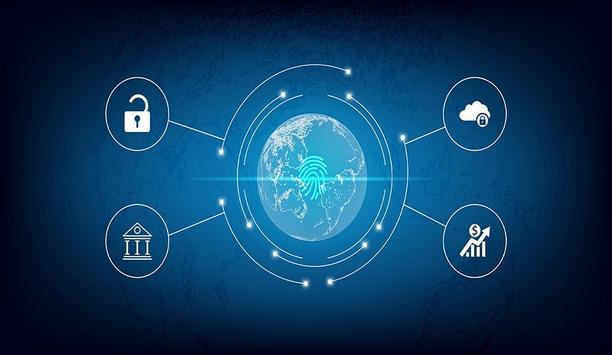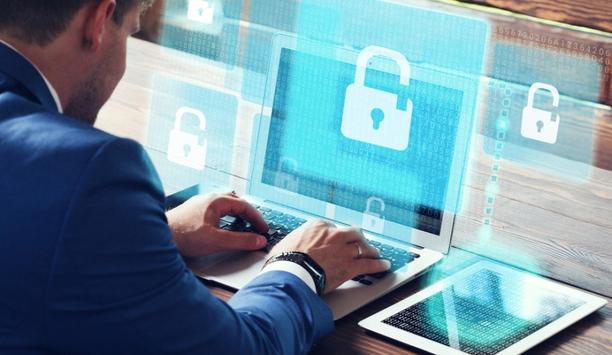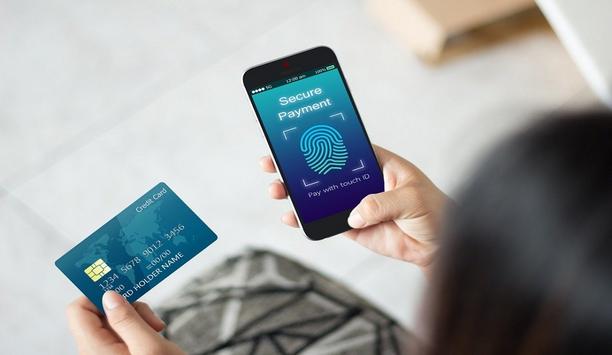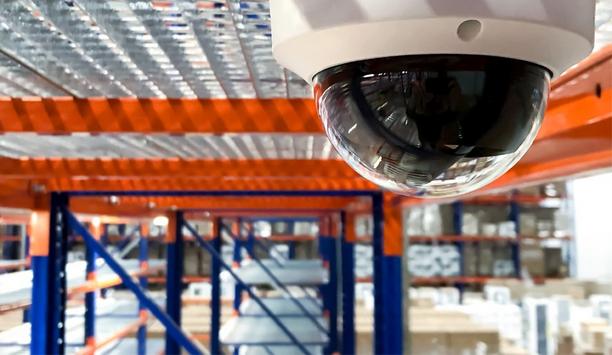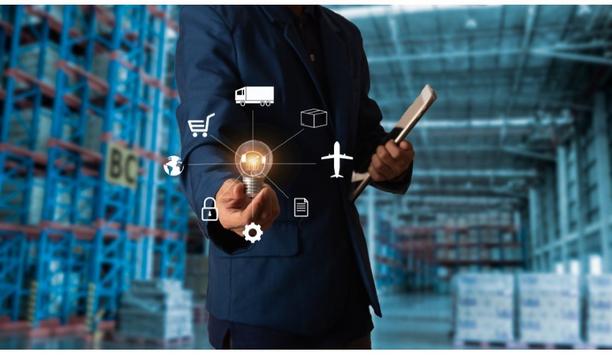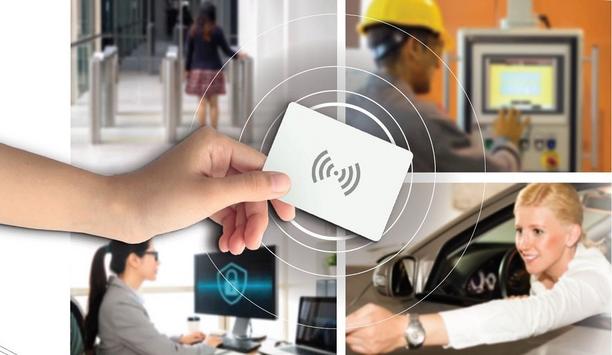Cyber security - Expert commentary
The outlook for advancements in door security solutions is proving to be an extension of the positive trends that have emerged over the past few years and that continue to evolve in exciting new ways. That’s a good sign as we make our way along the road toward an ever-safer world. Improvements in a hybrid workforce Here’s what we’re seeing: More and more companies are rethinking the office space and how electronic access control (EAC) security and data can help better s...
You’re no psychic. You probably don’t have the power of clairvoyance. But guess what? When it comes to your security, none of that matters. You can still create future-proof security by properly equipping yourself. Here’s how. Understanding access control Security is changing faster than ever before. With new threats inside the workplace and smaller security teams taking on more tasks, IT and security personnel must automate their processes using new technology. One difficu...
Hybrid cloud computing enables organisations to segregate their resources and workloads on-premise, in a private cloud, or a public cloud. But despite its many benefits, the hybrid environment also creates security concerns. AlgoSec’s co-founder and CTO, Prof. Avishai Wool shares his expert insights on some of these concerns and offers best practices to boost hybrid cloud security. Hybrid cloud computing Hybrid cloud computing combines on-premises infrastructure, private cloud services,...
If defence is the best form of attack, then in security, planned preventative maintenance (PPM) is the best way to protect your business from harm. Also known as PPM, the service ensures that your security efforts are up-to-date and effective. In the latest how-to guide, discover the benefits of planned preventative maintenance and learn how to add PPM to your building. What is Planned Preventative Maintenance? You have installed all of the necessary security measures for your business, now wh...
Although the wider adoption of 5G, together with faster connection speeds and improved bandwidth, opens up new prospects for telecom service providers, it also poses new risks in terms of network security. This article explains how telcos can make their newly-established 5G networks as well as telecom software solutions more impenetrable and secure. Implement robust device authentication protocols 5G is set to spur a wide-scale adoption of connected devices in the business and consumer sphere...
The growing mobile ownership rate, the emergence of more user-friendly banking apps, the tech-native younger generation, and, of late, the pandemic-induced shift to online, all create a fertile ground for mobile banking. Unfortunately, the acceleration of banking app adoption today goes hand in hand with the increase of targeted security threats. In 2022, a month wouldn’t go by without a headline-making mobile banking attack or incident that resulted in stolen funds and sensitive personal...
The smartphone is an integral part of our daily routines. The communication and entertainment device of yesteryear has become a serious player with which we increasingly handle sensitive processes, such as payment transactions. BLE or NFC authentication At the supermarket checkout, more and more customers are pulling out their smartphones instead of their wallets. Apple Pay, Google Pay, or specific banking apps make it possible: to hold the smartphone in front of the reader of the checkout sys...
Although video camera technology has been around since the early 1900s, it was not until the 1980s that video started to gain traction for security and surveillance applications. The pictures generated by these initial black and white tube cameras were grainy at best, with early colour cameras providing a wonderful new source of visual data for better identification accuracy. But by today’s standards, these cameras produced images that were about as advanced as crayons and coloring books....
The banking market continues to evolve through the growing use of digital and mobile devices, as more branch operations aim to enhance convenience and service for the customer. These advancements also create more significant opportunities for fraud and loss. Together, these two trends come full circle: Increasingly sophisticated fraud techniques require organisations to pursue new approaches to preventing and detecting such activities. Digital transformation But before we lead down that path,...
One of the biggest security trends in the last two years has been the adoption of cloud-based services, spearheaded mainly by an increasing number of video surveillance-as-a-service (VSaaS) offerings. VSaaS market value According to MarketsandMarkets Research, the global VSaaS market value is expected to reach $6.2 billion by 2026. This growth is propelled by demand for remote access video services, less local hardware to maintain, new internet-enabled devices, and a lower total cost of owners...
Organisations have shifted business focus countless times since the onset of the pandemic. While many leaders have been primarily concerned with the immediate health and safety of their customers and employees, 2022 has given rise to a new trend: More than ever, business leaders are seeking security solutions that increase operational efficiency and cost savings as well as improve logistics and business insight. As working environments become more complex, organisations looking to drive higher...
Back in 1890, Samuel Warren and Louis Brandeis published a ground-breaking article in the Harvard Law review called ‘The Right to Privacy’. To this day, it is regarded as one of the most influential essays in the history of American law and is widely regarded as the first publication in the United States of America to advocate a right to privacy, articulating that right primarily as a ‘right to be let alone’. In this essay, the authors questioned whether the arrival of p...
Currently and unfortunately, there is no such thing as Cloud Police. If there were, two-thirds or more of the companies using ‘cloud’ in their advertising and documentation would be in Cloud Jail for seriously misusing the word in their marketing. The term ‘Cloud’ is over-used and misused—sometimes intentionally and knowingly, but also often in ignorance. It’s just a word—but in the context of cloud computing technology, it does have a specific meaning...
Trevor Dearing, the EMEA Director of Critical Infrastructure Solutions at Illumio, said “It is encouraging to see NIST releasing updated guidance acknowledging the increase in cyber-attacks targeting the supply chain and the consequent necessity to bolster the supply chain’s cyber security. We can no longer turn a blind eye to the exponential increase in attacks on the IT systems of manufacturers, logistics companies and organisations, which ultimately target the operational part of...
Today, RFID readers can be found in numerous devices requiring user authentication, authorisation and access control, from doors to multi-function printers to point of sale terminals to computers and more. RFID is a simple, secure and convenient access control solution for end users and original equipment manufacturers. RFID readers/writers come with a broad range of form factors, capabilities and configurations. Choosing the right RFID reader When choosing a reader to embed into a system or d...
With increasing security and public health concerns, contactless credentials are gaining more and more importance. Contactless credentials can be divided into two main categories: soft credentials that include mobile phone applications that tap into their BLE/NFC hardware and transmit the data, and hard credentials that typically include low frequency (125 kHz) and high frequency (13.56MHz) based passive RFID transponders. With the help of these credentials, organisations can tackle safety conc...
In the era of the ‘Great Resignation’, it may seem counterintuitive to say that people will power business security in 2022. However, a convergence of challenges over the past few years has led to an undeniable trend in the security industry: With more technology comes the need for more people to monitor, analyse and leverage the data that technology produces. Always-on approach to security Since businesses were forced into lockdown two years ago, we’ve seen technology adopti...
Most individuals have strong opinions about what is more essential to our civilisation: personal privacy or security. After more than a decade of technology enabling greater and greater amounts of Personally Identifiable Information (PII) and data harvesting, now the pendulum is swinging towards a society that places more emphasis on individual rights and privacies. This shift is manifesting in a variety of ways, quickly changing the technology, security and cyber security landscapes, and requi...
Software as a Service (SaaS) provides computer equipment, OS, and software customised to the user’s purposes as a service. Access control can work in the same way. If you work in the physical security industry, especially concerning access control, you have probably heard about the term ‘ACaaS’ recently. ACaaS is a combination of ‘access control’ and ‘SaaS’ (Software as a Service). From a semantic point of view, ACaaS means providing cloud-based access c...
Technology continues to transform the physical security industry, helping companies become more aware of the full spectrum of risks their organisation faces. Our new survey provides strong evidence that the use of these tools is solving some problems, but their implementation may create new challenges. In our 2022 State of Protective Intelligence Report, 93% of respondents said their company was actively adopting new threat intelligence, monitoring and alerting solutions for physical security,...
This is an era of digital revolution and with it comes dozens of new security dangers. Every gadget, from our smartphones to our security cameras, need some kind of protection from external hacking. However, how can we assure the safety of our devices, workplaces, etc.? Biometric security is one such security method that has emerged, since it is both efficient and perceived foolproof. It offers an additional layer of security for businesses and personal security systems. Biometric security syste...
Access control for buildings is nothing new. Early forms of security access for business security systems were introduced in the 1960s, as business owners and managers looked for alternatives to keys, as a result of needing to frequently replace them, when there was a change in personnel. It’s only in recent years that the urgency to implement smarter, more efficient, and convenient forms of access control has increased, in the context of public and private sector digital transformation....
COVID-19 has undoubtedly impacted all industries, leaving its mark for years to come. Multiple lockdowns forced businesses across multiple sectors to reassess the way they worked, with many adapting to working from home due to the various stay-at-home orders. Data from a 2021 ONS survey revealed that 25.7 percent of the UK workforce, or 8.4 million people, worked from home during the pandemic, more than doubling the 2019 figure of 12.4 percent. A further nine million people were placed on furlo...
As a result of COVID-19, artificial intelligence (AI) has become table stakes for factories. Google’s 2021 Cloud Manufacturing Report found that 76% of manufacturing executives increased their adoption of disruptive technologies, including AI, during the pandemic. AI-based facial recognition technology AI has long been used in the sector to monitor the pace of work and anticipate machine failures, a trend that is expected to continue this year as factories look to optimise operations. Ho...
Corporate global security operations centres (GSOCs) bear the responsibility for protecting C-suite executives from physical and reputational harm amid the social upheaval, extreme weather events, and escalating cyber threats. That mission, daunting as it is, becomes more difficult when GSOCs lack the data necessary for conducting a comprehensive threat assessment. Threat intelligence Unfortunately, many centres never move past basic threat intelligence which focuses on scenario-driven queries...
As we enter into 2022, there is still a level of uncertainty in place. It’s unclear what the future holds, as companies around the world still contend with the COVID-19 pandemic. Remote working has been encouraged by most organisations and the move to a hybrid working system has become ‘business as usual’, for the majority of businesses. Some have reduced their office space or done away with their locations altogether. Following best security practices With all this change in...
There is no denying that the COVID-19 pandemic has radically changed the way we work. In May 2021, 31% of the countries workforce was still working remotely, with 71% of businesses in professional, scientific, and technical industries remote-working. Work patterns shifting Although the conversation often focuses on office workers, the COVID-19 pandemic has impacted the way many other, non-office sectors operate. In the security industry, since the introduction of lockdowns and social distancin...
They say nothing stays the same for long, and this has never been truer than in today’s world of technology and innovation. The 21st century has seen rapid changes and every day brings a new update in one of the many segments of technology. Technology is evolving at such a rapid rate, due to a phenomenon dubbed accelerating change. Each new improvement is now a stepping stone, enabling stronger and better generations of technology, at faster speeds. Accelerating change evolving across all...
In the new era of work, our relationship with the workplace is defined by flexibility and mobility. Employees are working across the home, office, and blended spaces more than ever before, as well as working varied hours to suit the modern work schedule. This new hybrid workforce model holds the potential for more diverse talent and better productivity, but it also comes with its challenges – one being how to ensure security, health, and safety in the workplace. Strong a...
Technology has certainly become an intrinsic part of our day-to-day lives, from the retail industry, to food and beverage outlets, and even within the health and fitness industry. It’s all around us, in varying formats, making processes more efficient. It has refined some of our older approaches, and in the hospitality industry, this is certainly true. Technological advances are leading the way forward for the future of hotels, and with the sector now free from COVID-19 restrictions, venu...




